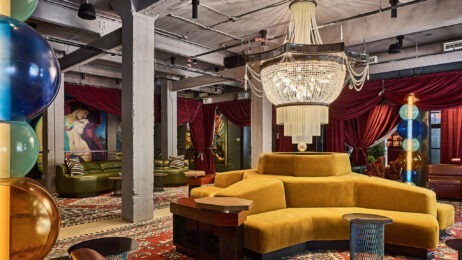
These tips will help you keep attendees happy
As we move into the peak season for meetings, conventions and trade shows, event planners should keep in mind that in the United States, good times have brought a historically low unemployment rate and a fierce demand for workers. In the restaurant and hotel sector, in particular, this can result in more employees with only a basic level of training working at meetings, receptions and meals, or a lower ratio of staffers to guests.
In light of this, getting satisfactory levels of service for each part of a business event is less certain than it used to be. To guarantee the expected quality of service at their events, planners must take certain actions and ask specific questions ahead of time. First, says Steve Enselein, senior vice president of events for Hyatt Hotels, planners should ask during the site-selection process about the training the service staff receives, as well as the average tenure of staff at the property.
“We’re happy to describe to planners what goes into our MEET training program for sales, service and operations employees,” he says. “[Furthermore,] many properties do emphasize the longevity of their employees, even using some public reader boards each day to show how many associates are on property, their combined years of experience and their average tenure. Doing that helps both planners and attendees feel confident about the people serving their meeting.”
Experience an Off-Site Venue Before the Event
When planners are considering off-site venues for a reception or meal, the hottest new place in a host destination might not be the best choice. “In major cities, there’s a new restaurant opening almost every week, and sometimes our clients want to use the most recent innovative venue,” says Emily Cole, senior program manager for Andavo Meetings and Incentives in Denver. “But if service is the main concern for that particular event, it’s probably better to use a more established place.”
In both cases, Cole always tries to anonymously experience a restaurant or other venue before booking it for a group. And while Yelp and other online-rating sites can give planners some perspective on a venue, most reviews aren’t written by attendees of group events.
Ask to See Hotels’ Customer-Satisfaction Surveys
As for more useful reviews, Enselein says that planners should ask to see the customer-satisfaction surveys that hotels conduct through independent firms. He says planners can observe the direction of scores and the trends within customer comments over the past year, and ask for referrals from groups who met around the same time their group will meet. “This way, you hear about the overall experience and any service challenges that might come up when a property is quite busy,” he says.
Provide the Hotel with Details ASAP
After contracting with a hotel, planners can help the property prepare its service experience for the group by passing along as much information as possible, as soon as possible. “Anything you can provide on your room setups, and food and beverage details—such as how many action stations you’ll run–allows proper personnel scheduling on our part,” Enselein says. “Of course, there will be changes and fine-tuning as we get closer, but don’t wait until your information is complete to give us a general picture and to let us start planning.”
Especially for more upscale receptions and meals that require lots of service staff, getting details to the property early makes it likely that the group will secure more experienced personnel. “A wine dinner where you’re willing to pay a bit extra for a guest-server ratio of 10-1, plus a few sommeliers to interact with guests, requires us to know well ahead of time,” Enselien says. Most business hotels have a list of experienced outside service personnel who can supplement the property’s staff—but without several weeks’ notice, those servers become unavailable because they accept work with other venues in town.
Cole asks about training levels, average length of tenure, and server-to-guest ratios for many of her F&B events. “If the property tells me the ratio is 50-1, I might ask what it will take to get it to 40-1,” she says. But Cole puts more stock in another factor: “If the banquet captain is pretty experienced and seems comfortable with the proposed ratio, I am usually OK with that. Communicating my needs through a seasoned manager who’s overseeing the staff is what’s most important to me.”
Limit Precons to 6 or 8 People
Once a planner gets on property for an event, the precon meeting with departmental leaders is the key time to ensure that the group’s specific service needs will get the proper attention. “[First,] ask to meet only with the six or eight people who will be most involved with the execution of the event,” Enselein advises. “This lets you ask detailed questions and get your most critical points covered much better than if there are 30 people in the room from different departments. The others can be communicated with electronically.”
Cole adds, “If you come in two days ahead of your event, it’s possible you’ll be meeting with departmental people who won’t be working the meeting. In my precon, I want the people who will also be on site with us.” Anonymous observation of meeting space, restaurants and other amenities on site further helps a planner gain last-minute insight on the service atmosphere.
Lastly, technology has made on-the-spot service remedies easier. For instance, Hyatt’s Event Concierge app lets planners request assistance for any aspect of a meeting; each request is funneled to the correct department for immediate action, rather than to a central contact. [“Furthermore,] the planner sees in real time that someone accepted the assignment and made the adjustment. And at the end of each day, planners can review the service-request log to make sure all requests were fulfilled.”





